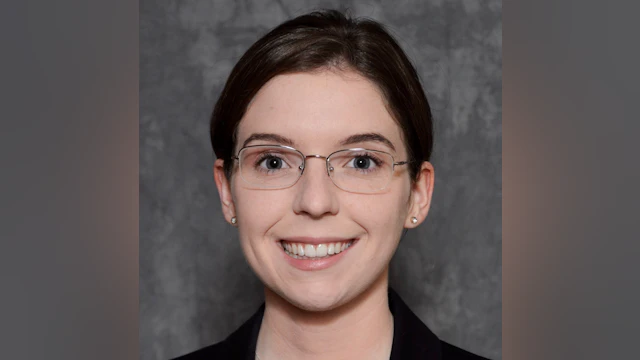The Research Roundup is a regular update of recently published findings in suicide prevention research. AFSP-funded studies included in this roundup examined how…
- Digital safety plans can be an effective tool for people with suicidal thoughts and behaviors
- Substance use and depression often contribute to risk for suicide in suicide loss survivors
- Machine learning algorithms from health care data can help detect children at risk for suicidal thoughts and behaviors, and
- Genetic predisposition to bipolar disorder and schizophrenia may be associated with risk for suicide attempt

Researcher: Phillipe Courtet, MD, PhD, Enrique Baca-Garcia, MD, PhD
Institution: Université de Montpellier (France), Fundación Jimenez Diaz (Spain)
Grant Type: 2017 Linked Standard Research Grant – $299,394
Grant Title: Sleep and Appetite as Risk Markers for Suicidality in a Cross-National Cohort of Suicidal Patients
A safety plan is a suicide prevention tool for helping someone navigate suicidal feelings and urges. Clinicians work with their clients to personalize the plan and provide detailed strategies to manage a crisis. Prior research has shown that safety plans help reduce the risk of suicide. Typically, safety plans are completed in paper format, but recent studies have shown that digitizing the tool in the form of an app may be a promising way of enhancing its availability and customization.
To test this, Drs. Phillipe Courtet and Enrique Baca-Garcia recruited 105 individuals with suicidal thoughts and behaviors and installed a digital safety plan, SmartCrisis 2.0, on their smartphones. Participants rated the app's usefulness at 7.4 out of 10, its ease of use at 8.9, and their likelihood of recommending it at 8.6. Overall satisfaction with the app was 9.6. The most frequently used feature of the app was identifying "warning signs" of a crisis, particularly feelings of sadness or loneliness. The next most used feature was "internal coping strategies," with exercise being the most common. These results show high participation and satisfaction rates, suggesting that this app-based safety plan is a feasible and well-received intervention, supporting its potential implementation in clinical practice.
Citation: Porras-Segovia, A., De Granda-Beltrán, A. M., Gallardo, C., Abascal-Peiró, S., Barrigón, M. L., Artés-Rodríguez, A., López-Castroman, J., Courtet, P., & Baca-García, E. (2024). Smartphone-based safety plan for suicidal crisis: The SmartCrisis 2.0 pilot study. Journal of psychiatric research, 169, 284–291. https://doi.org/10.1016/j.jpsychires.2023.11.039

Researcher: Alexandra Pitman, PhD
Institution: University College London
Grant Type: 2018 Standard Research Grant – $99,819
Grant Title: Understanding the Mediators of Suicide and Suicide Attempt Risk after Suicide Bereavement in the Danish Population
Research has demonstrated a consistent association between losing a partner to suicide and subsequent risk of suicide. However, there isn’t sufficient understanding of the mechanisms that may underlie this elevated risk. Two factors that researchers suspect may be at play are depression and substance use, as both have been shown to be prevalent after a suicide loss. It is important to understand these factors further to inform how to emotionally support individuals bereaved by suicide.
Using data from Denmark spanning 1980 to 2016, Dr. Alexandra Pitman compared 22,668 people who experienced a partner's suicide with 913,402 people whose partners died from other causes. She found that for both groups, suicide rates were very low (0.8% suicide bereaved vs. 0.4% bereaved by other causes). With regard to the role of depression, rates were similarly low, but higher among those bereaved by suicide (4.1%) compared with those bereaved by other causes (2.9%). While it appeared as if there were differences with regard to substance use, the difference between groups was not found when depression was taken into account. The findings emphasize the importance of preventing and treating depression in suicide-bereaved individuals to mitigate potential suicide risk. More research is needed to identify other contributing factors.
Citation: Pitman, A., McDonald, K., Logeswaran, Y., Lewis, G., Cerel, J., Lewis, G., & Erlangsen, A. (2024). The role of depression and use of alcohol and other drugs after partner suicide in the association between suicide bereavement and suicide: cohort study in the Danish population. Psychological medicine, 1–10. https://doi.org/10.1017/S0033291724000448

Researcher: Juliet Edgcomb, MD, PhD
Institution: University of California, Los Angeles
Grant Type: 2020 Pilot Research Grant – $30,000
Grant Title: Electronic Health Record Phenotyping for Cohort Discovery of New-onset Suicidality in Youth
Emergency rooms are often the first point of access to mental health care for children at risk for self-injurious thoughts and behaviors (SITB) yet there is still much to learn about the best way to use health care data to identify suicide-related emergencies in kids. One approach that has shown promise is using AI-based machine learning algorithms to analyze codified health care data to identify patterns and detect when children may have been experiencing SITB.
To explore the potential for machine learning-based approaches, Dr. Juliet Edgcomb compared the effectiveness of using current medical codes and patients’ chief (i.e., initial) complaint against machine learning algorithms developed to detect SITB among children aged 10 to 17. Doctors reviewed and classified 600 children who visited the emergency room for mental health concerns and machine learning models were trained using health record data in addition to current medical codes. Machine learning models significantly improved detection accuracy with nearly half (47.3%) of the visits involving self-harming thoughts and behaviors. Clinician classification missed a significant number of cases: 29% with only medical codes and over 54% with only chief complaints. Dr. Edgcomb also found that sensitivity (i.e., ability to detect) was lower for boys and preteens compared to girls and teenagers. These findings suggests that chief complaints and diagnoses are not enough on their own to determine the presence of SITB, and that machine learning is a tool that could enhance the detection of SITB in children.
Citation: Edgcomb, J. B., Tseng, C. H., Pan, M., Klomhaus, A., & Zima, B. T. (2023). Assessing Detection of Children With Suicide-Related Emergencies: Evaluation and Development of Computable Phenotyping Approaches. JMIR mental health, 10, e47084. https://doi.org/10.2196/47084

Researcher: Brenda Cabrera-Mendoza, MD, PhD
Institution: Yale University School of Medicine
Grant Type: 2022 Postdoctoral Fellowship – $132,900
Grant Title: Suicide-associated Loci Regulating Molecular Traits and Their Interaction With Environmental Factors
Research has shown that bipolar disorder (BD) and schizophrenia (SZ) are associated with higher risk for suicide attempt. Identifying factors contributing to the risk for suicide attempt in people with BD and SZ is crucial for developing effective prevention and treatment strategies. One way suicide prevention researchers are able to study this is by using a Mendelian randomization approach, which is a method used in epidemiology and genetics that combines genetic data with other factors (e.g., behavioral traits or sociodemographic factors) to identify potential cause-and-effect relationships.
Using this Mendelian randomization approach on a large-scale genetic database from the Psychiatric Genomics Consortium and the UK Biobank, Dr. Brenda Cabrera-Mendoza considered the influence of behavioral traits and socioeconomic factors. After analyzing the data, she found that genetic predispositions to BD and SZ significantly increased the risk of suicide attempts. Additionally, mental distress and risk-taking behaviors were found to independently contribute to suicide attempts, regardless of SZ genetics, while these same factors did partly explain the increased suicide risk in BD. The findings highlight the complex interplay between genetic risks and behavioral traits, underscoring the importance of comprehensive mental health assessments for individuals at high risk of suicide.
Citation: Cabrera-Mendoza, B., Aydin, N., Fries, G. R., Docherty, A. R., Walss-Bass, C., & Polimanti, R. (2023). Estimating the direct effects of the genetic liabilities to bipolar disorder, schizophrenia, and behavioral traits on suicide attempt using a multivariable Mendelian randomization approach. medRxiv: 2023.08.14.23294083. https://doi.org/10.1101/2023.08.14.23294083
Learn more about the AFSP research grants featured in this monthly roundup, as well as others, here.
